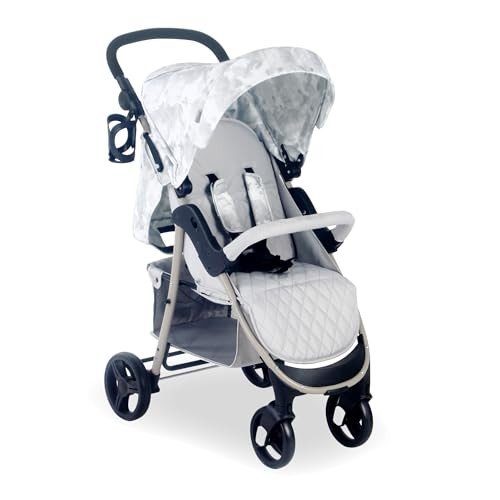Prams and Pushchairs for Newborns: A Comprehensive Guide
When it pertains to preparing for a brand-new baby, choosing the right pram or pushchair is an essential task for expectant moms and dads. With a myriad of choices available, making a notified choice is essential for both security and convenience. This short article aims to provide thorough insights into prams and pushchairs, focusing on the unique requirements of newborns.
Comprehending Prams and Pushchairs
Before diving into specifics, it is crucial to clarify the distinctions in between prams and pushchairs.
- Prams: Typically created for infants, prams have a flat, completely reclined position suitable for newborns. They often come with a large canopy and a carrycot, which provides a safe and comfortable area for the baby.
- Pushchairs: These are more versatile and can normally be changed to accommodate growing children. Modern pushchairs typically have convertible seating alternatives, permitting for an upright or reclined position, however they might not appropriate for newborns without additional support.
Both alternatives are created to offer convenience for the child and benefit for the caregiver, but selecting the ideal one depends upon numerous factors.
Aspects to Consider When Choosing a Pram or Pushchair for Newborns
Picking a pram or pushchair includes assessing numerous crucial elements:
- Safety Standards: Prioritize items that meet national and worldwide safety standards. Search for features such as secure harness systems, strong frames, and the lack of dangerous materials.
- Convenience: A well-padded seat and adjustable reclining positions are essential for a newborn's comfort. The cushioning should be soft and breathable to avoid overheating.
- Weight and Portability: For ease of use, consider the weight of the pram or pushchair. Lightweight designs are much easier to steer and store, but guarantee they don't jeopardize on stability.
- Versatility: Many prams and pushchairs are developed to adjust as your kid grows. Some models can transform from a pram to a pushchair and consist of safety seat attachments.
- Storage Capacity: Check for a basket or storage compartment to accommodate diaper bags and other essentials. Ample storage is particularly crucial for trips.
- Maneuverability: A great pram or pushchair must be simple to guide and navigate in tight spaces. Try to find features such as swivel wheels that accommodate turns and uneven surface areas.
- Weather condition Protection: A sunshade or rain cover is helpful to secure your baby from adverse weather. Guarantee these functions are simple to release and pull back.
- Design and style: While functionality is the main issue, lots of moms and dads value stylish styles. Select a color and fabric that matches your personal taste.
Types of Prams and Pushchairs
Here is a breakdown of typical types of prams and pushchairs available on the market:
| Type | Description | Suitable For |
|---|---|---|
| Traditional Prams | Carrycot design with a focus on comfort and security for infants. | Newborns as much as 6 months |
| Travel Systems | Combines a stroller with a safety seat for smooth shifts. | Moms and dads on-the-go |
| Lightweight Strollers | Compact and simple to fold, appropriate for city occupants. | Traveling families |
| Jogging Strollers | Designed with long lasting wheels for easy maneuvering on numerous terrains. | Active households |
| Convertible Strollers | Adapts from a pram to a stroller as the baby grows. | Long-lasting use |
Top Recommended Prams and Pushchairs for Newborns
Selecting from offered options can be intimidating. Here are some popular designs that consistently get high praise:
- Bugaboo Bee5: Known for its excellent maneuverability and lightweight frame.
- Silver Cross Wave: A top quality, versatile choice that can transform as your baby grows.
- Uppababy Vista: Offers substantial storage and can accommodate several kids as a stroller.
- Chicco Bravo Quick-Fold: Features an easy one-hand fold and appropriates for newborns when used with a compatible vehicle seat.
- Baby Jogger City Mini GT2: Combines robust features with portability for active families.
FAQs
Q: What is the distinction in between a carrycot and a pushchair seat?A: A carrycot is flat and designed particularly for newborns, enabling them to lie flat, whereas a pushchair seat is normally more upright and can be adjusted. Q: At what age can my baby transition
from a pram to a pushchair? Prams Online UK : Generally, babies can shift to a pushchair when they can stay up unassisted, normally around 6 months old, however constantly describe the producer's standards. Q: Are there prams and pushchairs that offer safety seat compatibility?A: Yes, lots of travel systems provide compatibility with baby automobile seats, making it easy to shift from cars and truck to pram without troubling your baby. Q: How typically should I examine security features?A: Regularly inspect harness systems, wheel locks, and the frame for wear or damage to make sure continuous safety for your kid
. Q: What ought to I look for in terms of service warranty and support?A: Choose a pram or pushchair that offers a considerable guarantee duration, which can vary from brand name to brand name, and check for client
support choices in case of problems. Choosing the ideal pram or
pushchair for a newborn is a decision that requires cautious idea and consideration. Comprehending the differences between prams and pushchairs, assessing their features, and comparing
numerous models empower moms and dads to make the very best option for their youngster. By investing time in research study and referencing the details provided, brand-new parents can guarantee that their baby experiences convenience and security during their trips, paving the method for pleasurable adventures together in the years to come.

